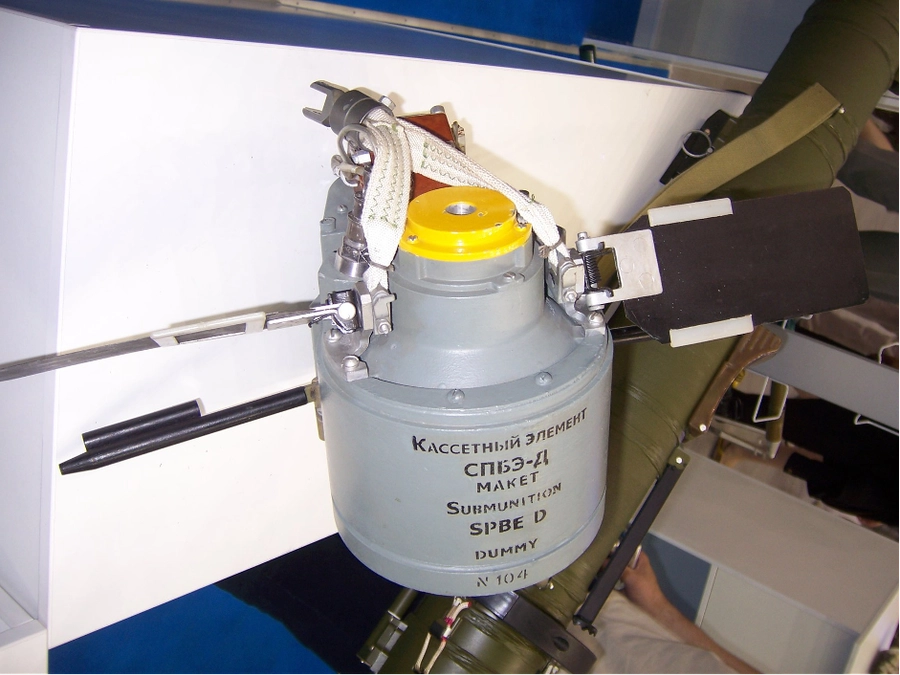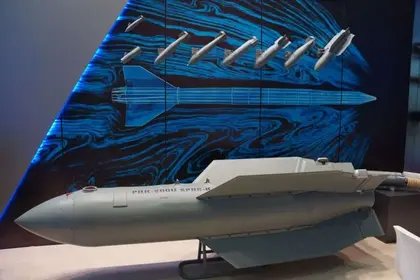A Reuters report on Wednesday cited a statement by Rostec, the Russian state defense corporation given to the TASS news agency that it would begin serial production of the new DREL (Drill) cluster munition-carrying glide bomb this year.
TASS first announced in 2021 that the weapon, which was designed by the Bazalt Research Group and to be manufactured by the Technodinamika Group (a subsidiary of Rostec), had been under development since 2016 and was planned to go into production last year.
JOIN US ON TELEGRAM
Follow our coverage of the war on the @Kyivpost_official.
The delay in preparing the DREL for serial production originally slated for 2021 was due to some unspecified hiccups during initial testing, according to the military discussion website Bulgarianmilitary.com.
Rostec claimed that the capability of the bomb is secret, while at the same time saying that it used a gliding flight path onto its target over long distances, was invisible to radar and resistant to EW jamming.
The spokesperson said the weapon was designed to release its payload at “exactly the right moment” to destroy armored vehicles, ground-based radar stations, power plant control centers and anti-aircraft missile systems.
The statement went on to say the DREL had passed all of the required defense ministry-designated tests and had matched all of the design parameters. The spokesperson declined to comment on nature of the testing, along with any confirmation of its being used in Ukraine, and gave no details on the timeline or scale of the DREL’s mass production.

North Korean Ballistic Missile Expert Spotted in Donetsk
Earlier this month, it was reported that the Russian military was planning to equip Kh-32 cruise missiles with cluster munitions for use in Ukraine.
According to the RBC news site Yuriy Ihnat, spokesperson for the Ukrainian Air Force, said that Moscow has repeatedly used both cluster bombs and white phosphorous munitions, often targeting civilian populations, so there is nothing unusual in the Kremlin’s latest proposals.
DREL Technical information
The DREL, whose correct nomenclature is PBK-500U SPBE-K, is an inertial and GPS/GLONASS-guided cluster glide bomb. It was first showcased at the Moscow Airshow in July 2017 and was claimed to have achieved initial operational capability in April 2018, although there has, to date, been no evidence of it having been used.
According to 2018 media reports the bomb is equipped with a “friend or foe” identification system which will minimize the danger of a strike against its own forces as well as carrying an electronic countermeasures pack that make it resistant to jamming and radar detection.
There are also claims that during the design and development phases, it was considered equipping DREL with a pulsejet engine to increase its range.
In its standard configuration the PBK-500U weighs 540 kilograms and can be released at a maximum altitude of 14 kilometers which would give it an operating range of 30 to 50 kilometers.
The DREL payload
 An SPBE-D submunition similar to that carried by DREL. Photo: 2016 military-technical forum.
An SPBE-D submunition similar to that carried by DREL. Photo: 2016 military-technical forum.
Different types of munition for inclusion in its payload were seen to be under development in 2016 but it is believed that designers finally opted to include 15 SPBE-K self-targeting anti-vehicle/materiel submunitions, according to the Soldat.pro weapons discussion platform.
The SPBE-K is a development of the earlier SPBE-D submunition. SPBE identifies the munition as being a self-guided combat submunition. The SPBE-K is thought to employ a twin-band (3–5 µm and 8–14 µm) infrared heat seeker and a millimeter-wavelength radar seeker with an identification of friend-or-foe (IFF) system to acquire and classify its target.
Once the sensor acquires a target of the right parameters, an onboard microprocessor arms and determines the optimum warhead detonation point. Target effect is achieved by the functioning of 4.5 kilograms of high explosives acting to produce an explosively formed projectile (EFP) from its one kilogram, 173mm diameter “Misnay-Schardin” copper plate.
On detonating the EFP strikes the target with a velocity of around 2,000 meters per second which allows it to defeat 70-80 mm of rolled homogenous armor (RHA) sufficient to penetrate the top armor of most tanks and create a high temperature “behind armor effect” which will ignite all materiel and explosives inside the vehicle.
The submunitions are claimed to have a self-destruct capability if they fail to engage a target after a set period, which according to Rostec is to “mitigate any post-conflict risks to the civilian population.” The timeframe for this self-neutralizing functioning remains unclear.
While the DREL has not been used in combat, as far as is known, some types of the SPBE submunitions are reported to have been used in Syria in 2015. Cassettes holding SPBE submunitions were loaded into standard PBK-500 carrier bombs, which were dropped against armored combat vehicles.
You can also highlight the text and press Ctrl + Enter






